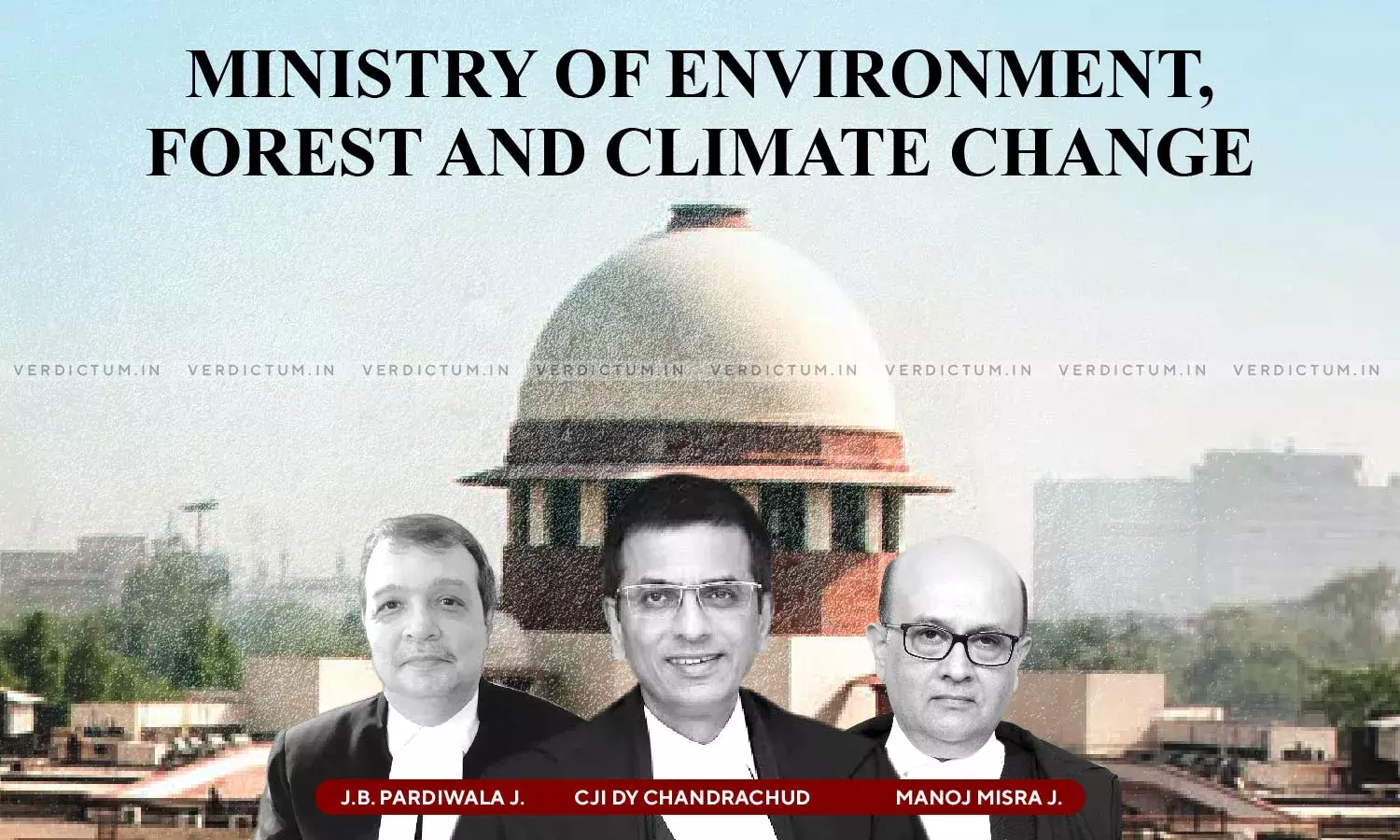Supreme Court Seeks Environment Ministry’s Response On Capping Of Iron Ore Mining In Odisha; State Objects Citing Inter-Generational Equity

The Supreme Court has sought the response of the Ministry of Environment, Forest and Climate Change (MoEFCC) on the capping of iron ore mining in Odisha. The petitioner, Common Cause (an NGO) had sought a capping on the basis on which a cap was imposed in the States of Karnataka and Goa by the Court earlier.
Today, during the arguments, the counsel for the petitioner argued that as per several reports, the resource would exhaust in the next 25 years. However, Senior Advocate Rakesh Dwivedi appearing for the State, while relying on inter-generational equity, vehemently opposed the statement saying that it had no basis considering that iron is a requisite in several major sectors of the country. Further, that if the same is accepted today, then tomorrow the capping would then be applied to coal.
A bench comprising Chief Justice of India D.Y. Chandrachud, Justice J.B. Pardiwala and Justice Manoj Misra while noting the affidavit filed by the Ministry of Mines, observed, “…Since several aspects are engaging the attention of this court will have a bearing on sustainable development and inter-generational equity, we are of the view that it would be appropriate to direct that an Affidavit be filed by the MoEFCC in pursuance of the direction dated August 14, 2023. The MoEF and CC shall file its affidavit based on its independent evaluation. The State of Irissa shall within a period of 4 weeks file its affidavit elaborating on the steps which have been taken (1. Recover the outstanding dues); (attach the assets of defaulter). The Affidavit shall specifically verify the extent of the recovering which has been made by the previous order. The Affidavit shall also indicate a specific timeline for the action which is propped and the time schedule for the recovery of the balance”.
AOR Prashant Bhushan appeared for the petitioner, ASG Aishwarya Bhati appeared for the Union of India.
At the outset ASG submitted that “Resources and production of iron ore has increased. That’s how it goes milords, the more exploration, the more discovery and availability”.
However, during the arguments, while seeking a response on whether the MoEFCC was consulted by the Ministry of Mines, the CJI asked, “What is the Ministry of Environment saying...because Ministry of Mines will be only looking at it from the point of view of you know the tapping of resources and the contribution of the resources made to the development of the nation, which is, of course important in itself. But the Ministry of Mines will give us some view on other environmental issues like, sustainable development and inter-generational equity…”.
To which, the ASG replied that it is the comprehensive view of the Ministry and the Union of India. However, the bench refused to accept the contention saying that the report nowhere says that the Ministry of Mines consulted the Environment Ministry, which is an expert body.
Then Dwivedi intervened to submit, “Affidavit clearly points out that while the consumption has grown at the same time, the availability of the resources has also grown and in fact 71% of the OGPA area, that is the area which prospecting is done and is already known that it is available there but it is still not being mined, that is still available. These facts are inter-generational equity”.
Explaining inter-generational equity further, Dwivedi submitted, “This iron ore leads to the production of steel, and steel today is important for Defence, it is important for all industries, it is important for expanding the Railways. So steel is the backbone milords. So therefore, any curtailment of all this would mean that the future generation is going to suffer much more, and that is inter-generational equity should not be looked at from the point of view of a particular resources only”.
Counsel appearing for the petitioner then argued, “There are parliamentary committee reports, there are MB Shah Committee Report all of them saying that the resource will end in 25 years”.
To that Dwivedi opposed saying that such a move would be pushing India back. “It would be better if your lordships defines inter-generational equity first…this argument that the after 25 years this resource it will exhaust has no basis but assuming some resource is getting exhausted, tomorrow this will be applied to coal”, he argued further.
It is to be noted that the Court in its previous order dated August 14, 2023 had issued the following directions: (i) The State Government shall take expeditious steps to pursue the recovery proceedings in accordance with law and shall take necessary steps by attaching the assets of the defaulting entities; and (ii) Hereafter, the terms and conditions of tender shall expressly clarify that no tender shall be entertained at the behest of an entity against which outstandings are due or companies in which the same promoters are interested.
The petitioner had submitted that the data on the record indicated that the yearly mining permissions cover 58 leases with permissible excavation to the extent of 227.13 million tonnes. Further that the total reserves are 4748.52 million tonnes, as a consequence of which, the reserves are liable to come to an end within twenty years.
On the other hand, the State of Odisha had disclosed that the estimate of iron ore reserves on the geologically explored strata at present is 9220 million tonnes and there is a likelihood of this increasing in future.
Cause Title: Common Cause v. Union Of India & Ors.

